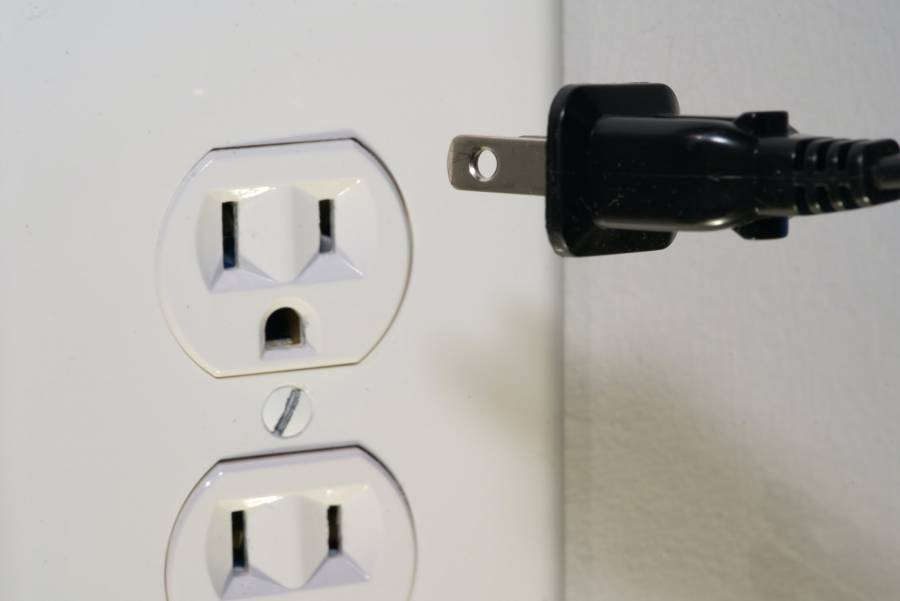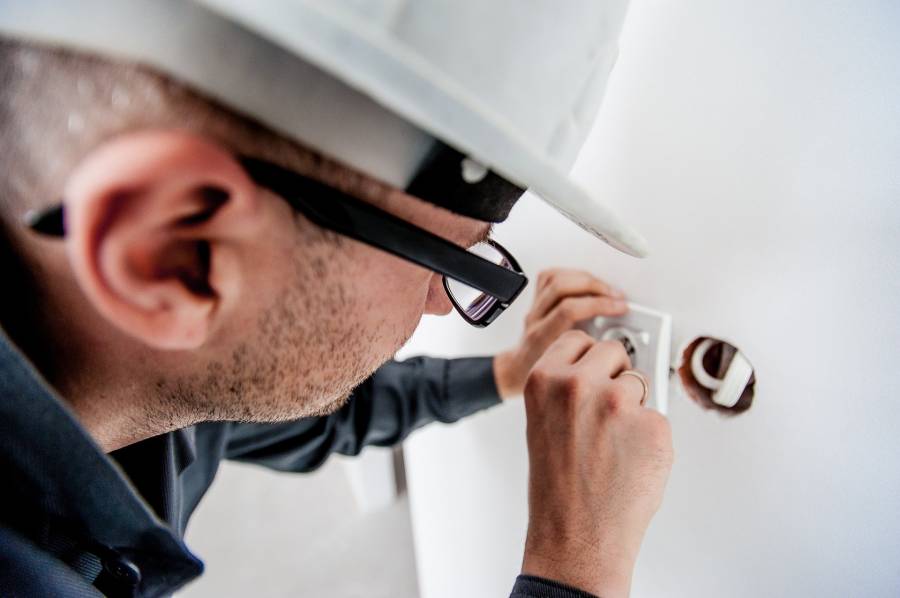Table of Contents
If you have a situation with the hot and neutral reversed but wired correctly, it’s essential to fix it.
While it may not seem like a big deal, this wiring error can cause serious problems, including fires.

Hot And Neutral Reversed But Wired Correctly – Causes
There are a few different things that can cause hot and neutral wires to be reversed. Let’s have a look at them!
Interrupted Electric Circuit
If you’ve ever had an electrical device quit working, you’ve undoubtedly had an interrupted electric circuit.
It occurs when something is operating as an obstacle in the path of the circuit wires.
It can be a screw that has come into contact with the wires in the wall. It can also be a piece of metal that is touching both Hot and Neutral wires.
Whatever the cause, an interrupted electric circuit can be a nuisance.
If you have a hot and neutral reversed but wired problem correctly, locating and resolving the source is critical.
Solution
The solution to an interrupted electric circuit is to fix the cause of the problem. It can involve removing a screw.
It can also be a piece of metal touching the wires, or it may be something more complicated.
If unsure of the cause, it is best to call an electrician.
Faulty Appliance Wiring
Another common cause of hot and neutral reversed but wired correctly is faulty appliance wiring.
The hot and neutral reversal can happen when the wires are not connected correctly. And they become loose over time.
Hot and neutral reversed but wired correctly issue is most likely to occur with older appliances. But it can happen with new ones too.
If you have a faulty appliance, it is vital to fix it as soon as possible.
Solution
If an appliance is drawing too much power, it may be because the hot and neutral wires are reversed.
If this is the case, the appliance will need to be repaired or replaced.
Hot and neutral reversed but wired correctly is a serious problem that a qualified electrician should address.
If you suspect this may be an issue with your appliance, do not hesitate to call for help.
Addressing the problem as soon as possible helps prevent further damage to your appliance and home.
Bad Connection
One possible cause of finding that your hot and neutral reversed but wired correctly is a loose connection somewhere in the circuit.
It can occur at the outlet, switch, or even inside the breaker box.
A loose connection along the circuit can cause the wires to become reversed.
Solution
If the connections are loose, all you have to do is tighten them. To begin, switch off the electricity at the circuit breaker box.
After the power has been turned off, unplug or remove the outlet or switch to inspect the connections. If they’re loose, tighten them until they fit correctly.
If the wiring is damaged, it will need to be replaced.
You can do this by cutting out the damaged section and splicing a new piece of wire. Once again, turn off the power before beginning any work on the electrical system.
You can quickly repair loose electrical connections with a few simple tools and a little know-how.
Faulty Breaker
A breaker is a device used to protect an electrical circuit from damage. It is typically located in the central panel of a home or office.
A breaker consists of a switch that is connected to two wires.
One wire is known as the hot wire, while the other is known as the neutral wire.
The hot wire carries electricity to the breaker, while the neutral wire returns it to the source.

In some rare cases, a faulty breaker can cause the hot and neutral wires to be reversed. It usually happens when the breaker is old or damaged.
When hot and neutral are reversed but wired correctly occurs, the electricity will flow through the breaker in the wrong direction.
It can cause a fire or an electrical shock.
Solution
If you suspect that your breaker is the problem, you’ll need to call an electrician to have it replaced.
Once the electrician arrives, they will first shut off the power to your home at the main breaker box. They will then remove the cover of the breaker box.
And test the wires to see if they are hot and neutral. If they are reversed, the electrician must install a new breaker.
Finally, they will turn the power back on and test the new breaker to ensure it is working correctly.
Damaged Wire Insulation
If your home has ever experienced a power outage, you know how frustrating it can be.
Not only is there the inconvenience of being without electricity, but also the potential damage to your home’s wiring.
In some cases, the insulation around the wires can become damaged. It usually happens when the wires are old or have been chewed on by animals.
When the insulation is damaged, it can expose the wires and cause a short circuit.
Storms, in particular, can cause extensive damage to electrical systems. And if you’re not prepared, you may incur costly repairs.
Most modern homes are wired with breakers that will trip if the current gets too high or hot, and neutral wires get reversed even when they are wired correctly.
But it’s still important to be aware of the potential risks.
A short circuit is a condition in which electricity flows through a path that has a lower resistance than intended. It can cause a fire or an electrical shock.
If you suspect your wires are damaged, contact an electrician for further assistance.
Solution
If your wires’ insulation is damaged, you’ll have to have them changed by an electrician.
The first step will be for the electrician to turn off the electricity at your home’s main breaker box.
They’ll then unplug or switch off the outlet or circuit to access the wiring.
Once they’ve done that, they’ll use a voltage tester to double-check that the power is off before proceeding.
After that, they’ll unscrew the outlet’s faceplate or switch and remove it from the electrical box.
At that point, they’ll loosen the wire nuts that attach the old wires to the new ones. Then, they will carefully not let bare wires touch other metal surfaces.
Once the new wires are connected, they’ll screw on a faceplate and turn on the power at the breaker box.
Finally, they’ll test the outlet or switch to ensure it’s working correctly.
While this may seem like a lot of work, it’s vital to remember messing with electricity can be very dangerous.
That’s why it’s always best to leave electrical work to the professionals.
Key Takeaways
- Reversed hot and neutral wires can cause damage to an electrical circuit.
- A loose connection anywhere along the circuit can cause the wires to be reversed.
- If you suspect that your breaker is the problem, you’ll need to call an electrician to have it replaced.
- If your wires’ insulation is damaged, you’ll have to have them changed by an electrician.
